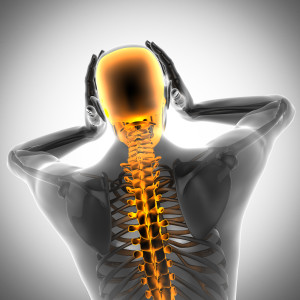I have been finding a lot of information recently on spinal cord injuries, paralysis, and paraplegia. It is a sad reality that many of the severe work injuries my clients experience are so traumatic that they can lead to other medical issues. This list is just the most common types of medical issues some of my clients have experienced but I am sure there are more out there. This is a pretty scary list but I want people to be educated so they can talk to their doctors and, hopefully, take the necessary steps to prevent as many complications as possible.
Deep Vein Thrombosis (DVT) – “Blood does not flow normally to a paralyzed limb that is inactive for long periods. The blood pools in the deep veins and forms clots, a condition known as deep vein thrombosis. A clot or thrombus can break free and lodge in smaller arteries in the brain, causing a stroke, or in the lungs, causing pulmonary embolism.” (source https://medical-dictionary.thefreedictionary.com/ )
)
Pressure Ulcers – “Inability to move also leads to pressure ulcers or bed sores. Pressure ulcers form where skin remains in contact with a bed or chair for a long time. The most common sites of pressure ulcers are the buttocks, hips, and heels.” (source https://medical-dictionary.thefreedictionary.com/)
Spasticity and Contracture – “A paralyzed limb is incapable of active movement, but the muscle still has tone, a constant low level of contraction. Normal muscle tone requires communication between the muscle and the brain. Spinal cord injury prevents the brain from telling the muscle to relax. The result is prolonged muscle contraction or spasticity. Because the muscles that extend and those that bend a joint are not usually equal in strength, the involved joint is bent, often severely. This constant pressure causes deformity. As the muscle remains in the shortened position over several weeks or months, the tendons remodel and cause permanent muscle shortening or contracture. When muscles have permanently shortened, the inner surfaces of joints, such as armpits or palms, cannot be cleaned and the skin breaks down in that area.” (source https://medical-dictionary.thefreedictionary.com/)
Heterotopic Ossification – “Heterotopic ossification is an abnormal deposit of bone in muscles and tendons that may occur after injury. It is most common in the hips and knees. Initially heterotopic ossification causes localized swelling, warmth, redness, and stiffness of the muscle. It usually begins one to four months after the injury and is rare after one year.” (source https://medical-dictionary.thefreedictionary.com/)
Autonomic Dysreflexia – “Body organs that regulate themselves, such as the heart, gastrointestinal tract, and glands, are controlled by groups of nerves called autonomic nerves. Autonomic nerves emerge from three different places: above the spinal column, in the lower back from vertebrae T1-L4, and from the lowest regions of the sacrum at the base of the spine. In general, these three groups of autonomic nerves operate in balance. Spinal cord injury can disrupt this balance, a condition called autonomic dysreflexia or autonomic hyperreflexia. Patients with injuries at T6 or above are at greatest risk.” (source https://medical-dictionary.thefreedictionary.com/)
Pulmonary Embolism – “Pulmonary embolism is blockage in one or more arteries in your lungs. In most cases, pulmonary embolism is caused by blood clots that travel to your lungs from another part of your body — most commonly, your legs. Pulmonary embolism is a complication of deep vein thrombosis (DVT), which is clotting in the veins farthest from the surface of the body.” (source https://www.mayoclinic.com/)
Loss of Bladder and Bowel Control – “Bladder and bowel control require both motor nerves and the autonomic nervous system. Both of these systems may be damaged by SCI. When the autonomic nervous system triggers an urge to urinate or defecate, continence is maintained by contracting the anal or urethral sphincters. A sphincter is a ring of muscle that contracts to close off a passage or opening in the body. When the neural connections to these muscles are severed, conscious control is lost. In addition, loss of feeling may prevent sensations of fullness from reaching the brain.” (source https://medical-dictionary.thefreedictionary.com/)
Sexual Dysfunction – “Men who have sustained SCI may be unable to achieve an erection or ejaculate. Sperm formation may be abnormal too, reducing fertility. Fertility and the ability to achieve orgasm are less impaired for women. Women may still be able to become pregnant and deliver vaginally with proper medical care.” (source https://medical-dictionary.thefreedictionary.com/)
If you or a loved one is dealing with any of these medical issues related to a spinal cord work injury or if you would like more information on the Virginia workers’ compensation system, order my book, “The Ultimate Guide to Workers’ Compensation in Virginia”or call our office today (804) 755-7755.
About the Author: Michele Lewane
The Injured Workers Law Firm is a Richmond, Virginia based firm solely focused on serving clients with workers' compensation claims in Virginia. If you have questions about your benefits or if you would like more information on the Virginia workers’ compensation system, order our book, “The Ultimate Guide to Workers’ Compensation in Virginia” , or call our office today (804) 755-7755.


